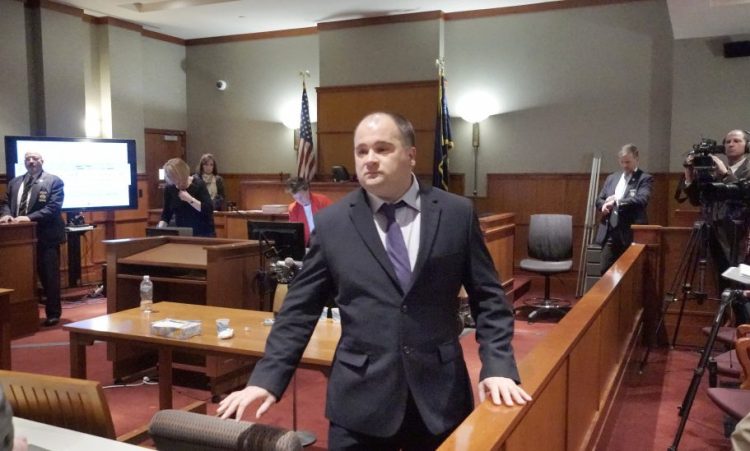Anthony Sanborn waited a long time for this.
Now 47, Sanborn had been behind bars since he was 16, convicted of a murder he says he didn’t commit. But through an unprecedented series of events and dogged work by his lawyers, his done-deal of a case was reopened this year, and he was given the chance to argue for a new trial based on charges that police and prosecutors had mishandled evidence and coerced witness testimony.
As that hearing was headed toward a conclusion last week, the state and Sanborn agreed to a settlement. He dropped his claim for a new trial, and replaced it with one that said his 70-year sentence had been excessive. The state agreed that Sanborn could be released on time served.
It was a good outcome for both parties. Sanborn does not have to spend another day living in fear that he’ll be sent back to prison, and the Maine Attorney General’s Office was spared the headache of retrying a 29-year-old case in which all the main witnesses have recanted their testimony and there are chain-of-custody problems with key evidence that has been sitting unsecured in a retired detective’s attic.
But it was not a good outcome for the rest of us, because too many questions have been left unresolved.
Such as, did the police and prosecutor make so many mistakes in this case that a convicted murderer was able to walk out of prison?
Or, was an innocent teenager railroaded into what could have been a lifetime in prison by law enforcement officers willing to cut corners in order to get a conviction? And if so, how do we know he was the only one to whom that happened, and how do we know it won’t happen again?
What we do know for sure is that once the case against Sanborn was given scrutiny, it quickly fell apart.
Sanborn was charged with the murder of Jessica Briggs, who was stabbed to death and thrown into the Fore River in May 1989. Both of them were 16.
The state’s case was built on three witnesses, two of whom now say that they lied at Sanborn’s trial because they were intimidated by police. Most spectacularly, Hope Cady, the supposed eyewitness to the crime, told Justice Joyce Wheeler not only that she was nowhere near the crime scene that night, but also that she couldn’t have seen anything even if she had been there: Her eyesight was so bad at the time that she was legally blind.
Cady now says she testified against Sanborn because the detectives were threatening to send her back to the state’s juvenile corrections facility, known then as the Maine Youth Center.
Sanborn’s lawyers showed that the third witness, who is now dead, had been a suspect in a sexual assault case at the time but was never prosecuted.
That doesn’t prove that Sanborn is innocent, but it makes it hard to see how the state would have been able to convince another jury of his guilt.
Prosecutors were right to cut a deal, but it shouldn’t stop there. The Maine Criminal Justice Academy should examine its training methods and recommended policies for recording interviews and interrogating teenagers to see if there are any changes needed to stop something like this from happening again.
The academy’s administrators should be called before the Legislature’s Criminal Justice and Public Safety Committee to report on their findings.
This case is closed as far as Sanborn is concerned. But that doesn’t mean the rest of us should stop asking questions.
Send questions/comments to the editors.



Success. Please wait for the page to reload. If the page does not reload within 5 seconds, please refresh the page.
Enter your email and password to access comments.
Hi, to comment on stories you must . This profile is in addition to your subscription and website login.
Already have a commenting profile? .
Invalid username/password.
Please check your email to confirm and complete your registration.
Only subscribers are eligible to post comments. Please subscribe or login first for digital access. Here’s why.
Use the form below to reset your password. When you've submitted your account email, we will send an email with a reset code.